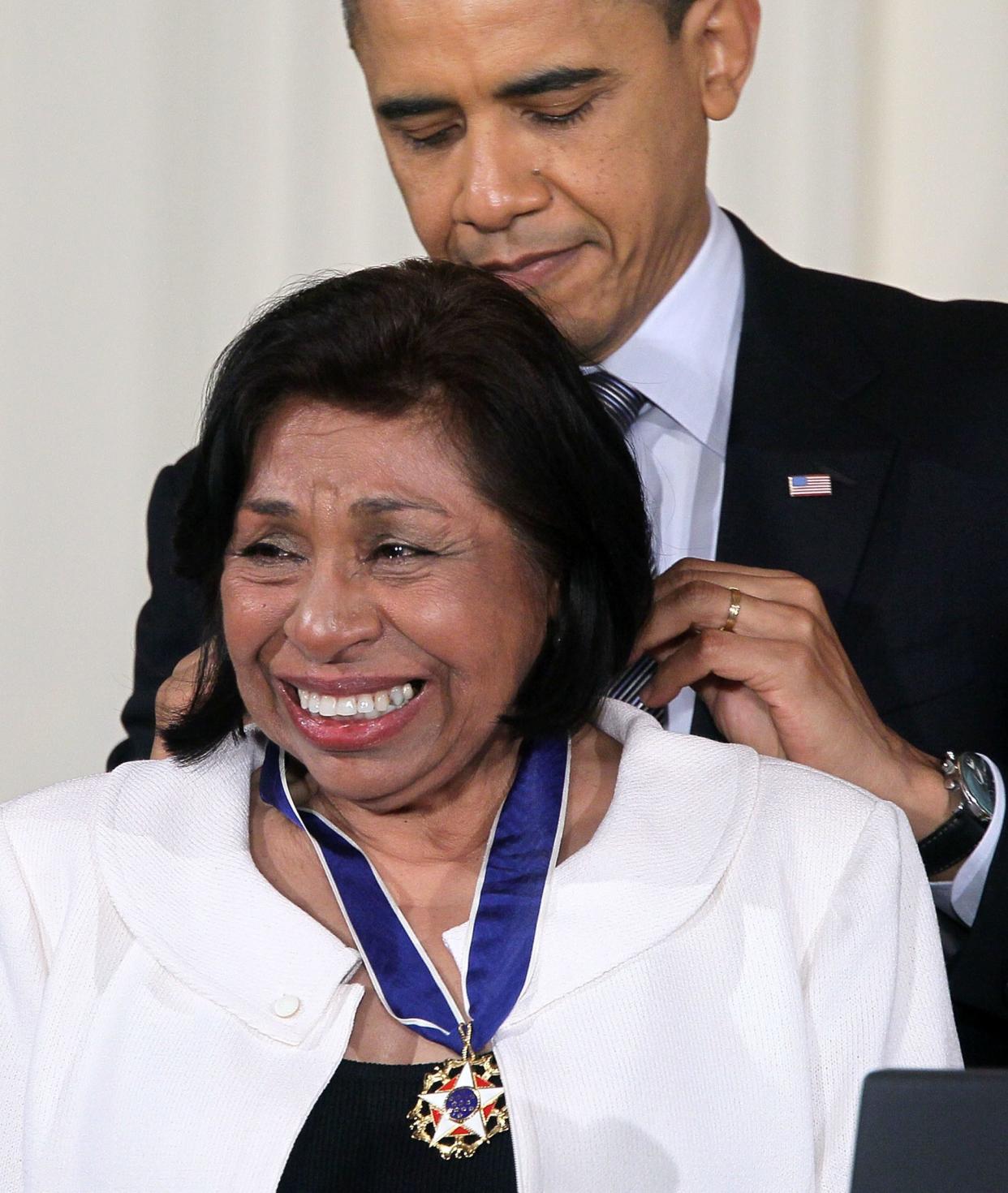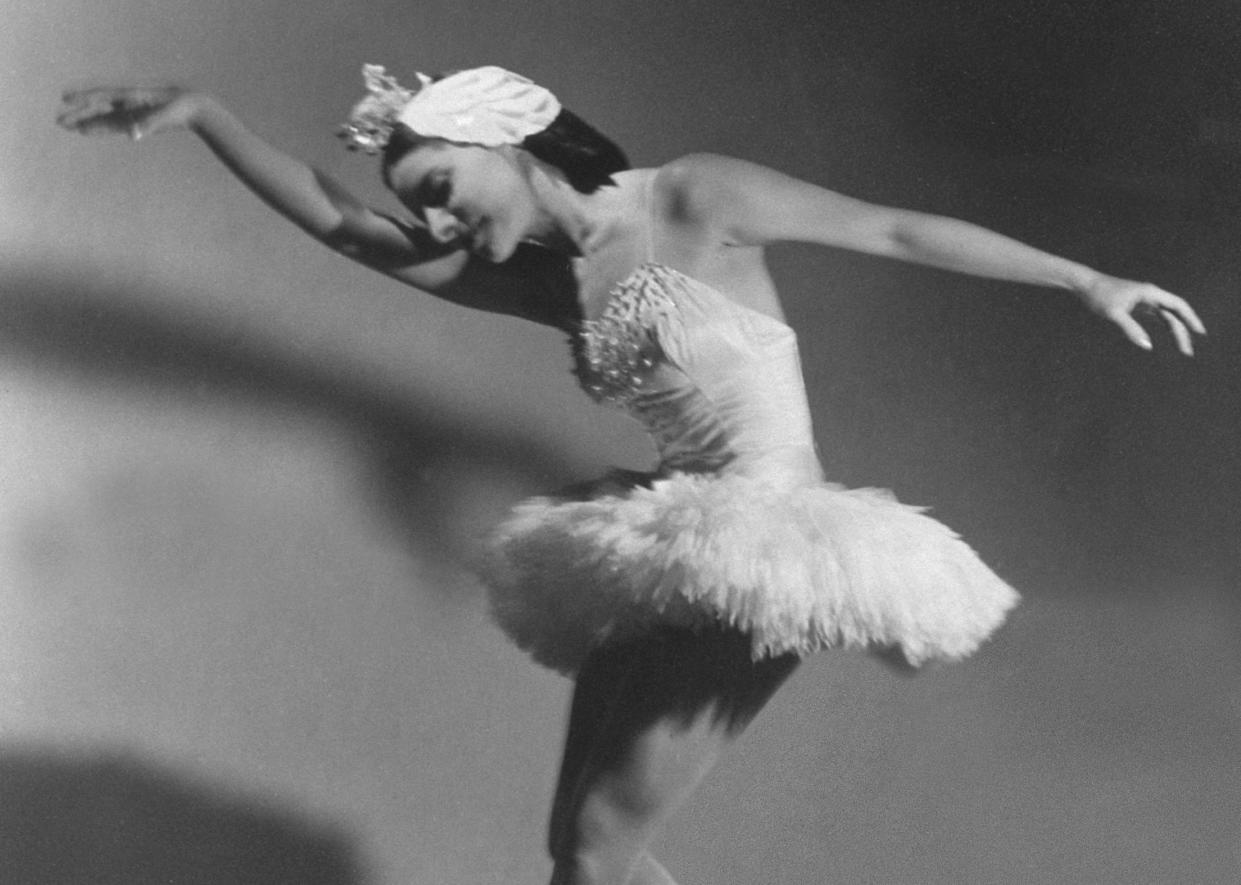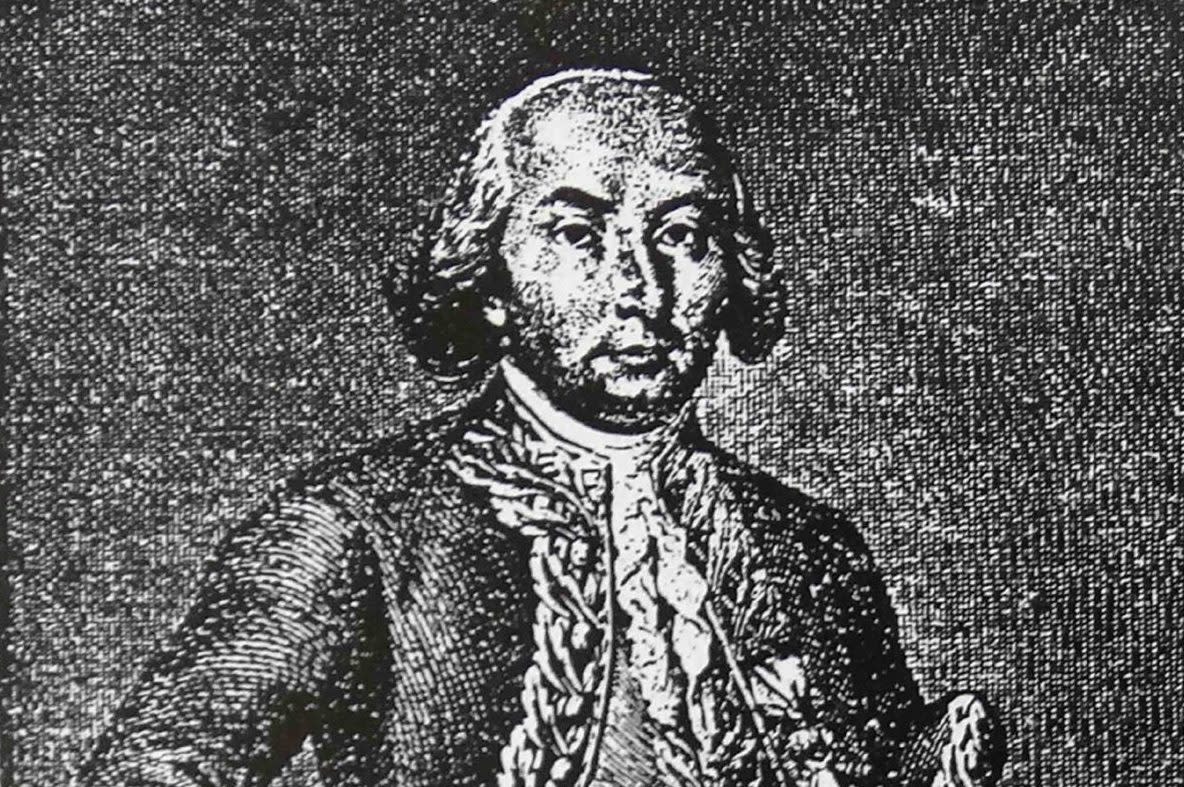14 Hispanic Heroes Who Didn’t Make the History Books
Trailblazers who deserve their rightful spot in history
It’s a sad fact of American history: Unless you are a White man, there’s a good chance that your contributions to society will be marginalized, if not completely left out of this country’s retelling of history. That’s a huge disservice, not only to the people who worked hard to make a difference but also to the rest of us. Without knowing their achievements, we get an incredibly whitewashed perspective of the world and miss some essential information that would help us better understand it. Hispanic Heritage Month (September 15–October 15) helps to rectify that. A celebration of the culture and the contributions of people of Hispanic and Latin American ancestry, it is the perfect time to take a closer look at some of the unsung heroes who contributed to the civil rights movement, politics, the pursuit of freedom, and the arts. As we bring their stories from the shadows into the limelight, make sure to take particular note of these trailblazing Hispanic Americans.
Esteban Hotesse
Esteban Hotesse was born in the Dominican Republic in 1919 and came to the United States at a very young age. During World War II, he became part of the all-Black military air force group known as the Tuskegee Airmen. Hotesse, along with 101 other Tuskegee Airmen, protested Jim Crow laws and segregation, which denied them entrance to the officer clubs at the Freeman Army Airfield in Indiana. The Black pilots protested by peacefully entering the club and then later refusing to sign an order stating they accepted the order that barred them from entering any facilities for White officers; they were subsequently arrested. As Edward De Jesus, a research associate at the Dominican Studies Institute at CUNY, told the website Remezcla, “this act of disobedience later served as a model in the civil rights movements in the ’50s in the boycotts that Martin Luther King and Rosa Parks participated in.”
Hotesse was killed at the young age of 26 during an unfortunate training exercise, but his contributions to the fight against racism shouldn’t be forgotten. Here are another 35 Black Americans you didn’t learn about in history class.
Sylvia Mendez

You’ve likely heard of Brown v. Board of Education, but 1947’s Mendez v. Westminster set the stage for its landmark ruling seven years earlier. That case centered on young Sylvia Mendez, who moved to the California city of Westminster with her family in 1943. Her parents, Gonzalo and Felicita Mendez, were not permitted to enroll their daughter in the local school; at this time, Mexican students were largely segregated from their White counterparts. So, the Mendez family, along with four other Mexican families, sued the Orange County school district. Mendez v. Westminster argued that segregation in the schools violated the 14th Amendment, which guarantees equal protection to people of all races. The Mendez family won their suit, and in 1947, California’s Governor Warren signed legislation that enforced desegregation in the schools.
The arguments in this case were subsequently used by the NAACP in Brown v. Board of Education, during which the Supreme Court ruled that racial segregation in public schools was unconstitutional. Even though these cases changed the law, this is why desegregation didn’t put an end to racism in America.
Jovita Idár
Born in Laredo, Texas, in 1885, Jovita Idár was a Mexican-American journalist, teacher, and women’s rights advocate. Her father welcomed her into the family business as a writer for the newspaper La Crónica, where Idár advocated for the education of Mexican-Americans, civil rights, and the suffrage movement. She later wrote for the newspaper El Progreso. Her writing was viewed as contentious and too critical of President Wilson’s policies in her state. In fact, after she wrote a scathing editorial condemning the U.S. military’s involvement in the Mexican Revolution, the Texas Rangers arrived at the El Progreso office with the intent of shutting it down. Idár confronted them at the door and refused to let them in. Unfortunately, they later returned and accomplished their task, but the incident didn’t stop her, and she continued her work elsewhere.
Idár also advocated for the teaching of Mexican-American history in schools, as she believed it was important for students to see themselves represented in the history of the United States. Learn about 30 more women pioneers who changed the world.
Azucena Villaflor de Vincenti
There is nothing like a mother’s love, and Azucena Villaflor de Vincenti, the founder of Argentina’s Mothers of the Plaza de Mayo, exemplifies that statement. In November 1976, just a few months into Argentina’s military dictatorship, Villaflor’s second child, Nestor, and his fiancé disappeared. Kidnappings like this were part of the regular oppression wrought by the government of Jorge Videla between 1976 and 1983. Villaflor and other grieving mothers demanded answers: Where are our children? They organized and eventually marched in Buenos Aires’ Plaza de Mayo.
Due to her relentless pursuit of answers, she was abducted while running errands a block and a half from her home in December 1977. At the age of 53, she became one of “the disappeared” in Argentina, who number more than 30,000. The organization she founded still exists, and the Mothers of the Plaza de Mayo march to this day. Find out about these other Hispanic women who changed the world.
Marielle Franco
Marielle Franco was born in 1979 in the favelas (shantytown) of Maré in Rio de Janeiro, Brazil. She grew up in poverty and became a single mom at 19, but she never gave up her dream, eventually winning a scholarship to study social sciences and then receiving a master’s degree in public administration. Elected as a city council member in Rio in 2017, Franco ran on a campaign that prioritized the rights of women, single mothers, the LGBTQ+ community (of which she was also a part), and the low-income residents of the favelas. Franco represented hope for low-income, gay women of color. In 2018, Franco and her driver were assassinated, allegedly killed by a former police officer who had become the leader of a paramilitary group. Franco’s death inspired other women to run for public office in an attempt to reshape public policy in Rio. Closer to home, these 12 LGBTQ+ activists changed the course of American history.
Alicia Alonso

Ballet was Alicia Alonso’s life, and she turned it into one of Cuba’s passions. Born in 1920 in Havana, she began dancing at the age of nine, and when she was 17, she won a scholarship to the School of American Ballet in New York City. Within a few years, she was the star of George Balanchine’s American Ballet Caravan and Ballet Theatre (which later became American Ballet Theatre). That same year, in 1940, she started losing her vision. She was diagnosed with severe retinal detachment and underwent multiple surgeries, which led to the loss of her peripheral vision. After a full year of convalescence, Alonso returned to the stage as Giselle, solidifying her reputation as a tour de force in the world of dance.
Once established as a star, the Cuban government invited her to help create the National Ballet of Cuba, as well as the country’s first dance school. Previously, Cuba didn’t have a national company or even a ballet school. Alonso traveled from one corner of the island to another, searching for raw talent to train and cultivate at the ballet school. With her distinctive technique and drive for excellence, she grew the National Ballet of Cuba to international fame. Even well into her 90s, Alonso continued to be directly involved with the ballet company she helped found. She died in 2019, at the age of 98. Alonso’s story may inspire you to watch some of the best dance movies of all time.
Raffi Freedman-Gurspan
Born in 1987 and adopted from Honduras, Raffi Freedman-Gurspan was raised in Massachusetts. After being hired as a recruitment director in the Obama administration’s Office of Personnel, she became the first openly transgender woman to serve in the White House. In her work, both in the government and out of it, she has been an advocate for LGBTQ+ rights, often focusing on the issues affecting low-income members of her community. Freedman-Gurspan currently works as Deputy Director for All on the Line, an organization seeking to advance political equity for communities by dismantling gerrymandering. Here are more LGBTQ+ heroes who helped forge a path toward equality and acceptance.
Policarpa Salvarrieta
Now, let’s go way back in history. Policarpa Salvarrieta, nicknamed La Pola, was from Guaduas, Colombia. Born in 1795, she joined the movement for Colombian independence from Spain along with her brothers. Salvarrieta became a spy for the rebels and would eavesdrop on her wealthy employers to gather information. In 1817, at the age of 22, she was captured and sentenced to death. The execution of such a young woman was scandalous, and it led to increased criticism of the Spanish government and spurred a larger opposition movement. Salvarrieta is memorialized on the 10,000 pesos note in Colombia, and the Colombian government celebrates the Day of the Colombian Woman on November 14—the day of Salvarrieta’s death. Today, Colombia is one of the countries that are safer than you think.
Chico Mendes
The son of a rubber tapper who lived in Brazil, Chico Mendes developed a deep love for the environment early on. He also soon became alarmed at the high rates of deforestation in the Amazon and the subsequent environmental and economic damage it was causing to his community. He became president of the Xapuri tappers’ union, which became a national and eventually global advocate and defender of the rainforest. Mendes lobbied at an international level and raised awareness of the damage done by cattle ranchers in the Amazon, and he was named as one of the UN Global 500 in 1987 in recognition of his work. He also advocated for protected land that could be utilized sustainably by indigenous groups. One such reserve, comprised of more than one million hectares of land, was established shortly after his death and named the Chico Mendes Extractive Reserve.
Pedro Infante
A singer and star of Mexican cinema, Pedro Infante Cruz was born in Mazatlán, Mexico, in 1917. Infante began his musical career at a young age, learning to play multiple instruments including the guitar from his father and singing with his dad’s musical group, La Rabia. Infante quickly rose to fame in the 1940s and starred in more than 60 films. Around this time, his musical career also took off, and over the course of his life, he recorded more than 350 songs. Infante was an aviation fanatic and died tragically young in a plane crash (in a plane he was piloting) at the age of 40, in 1957. His popularity in Latin America supersedes his death, and his films are still aired on channels both in the United States and across Latin America.
Gabriela Mistral

Gabriela Mistral was born Lucila de María del Perpetuo Socorro Godoy y Alcayaga in Vicuña, Chile, in 1889. (Her pseudonym was a combination of the names of her two favorite poets, Gabriele D’Annunzio and Frédéric Mistral.) Mistral taught primary and secondary school in low-income communities for many years until her poetry brought her fame, and she was eventually invited to consult with the Mexican government and helped lay the foundation for the first public school system in Mexico. Some of her most famous works include Desolación and Ternura, and she became the first Latin American woman to receive the Nobel Prize for Literature in 1945. For more female firsts, check out these 58 other trailblazing women who made history.
Maria Izquierdo
A prominent Mexican painter born at the turn of the 20th century, Maria Izquierdo had humble and hard beginnings. She was raised by her maternal grandparents in a rural part of the country, married a soldier when she was just 14, and ended up leaving him (and being left alone with three children) by the time she was 24. In 1927, though, she began studying at the San Carlos Academy of Fine Arts and embarked on a new path in life. Her style was greatly influenced by Rufino Tamayo, with whom she had a romantic relationship, and her work centered around things she witnessed in her travels, as well as important themes in Mexican culture. She went on to become the first Mexican woman to exhibit her paintings in the United States in 1930. Her work was also shown in France, Japan, Chile, and India. Although she did not reach the heights of fame enjoyed by other notable Mexican artists, Izquierdo continued to paint until her death in 1955.
José Arturo Castellanos
This unsung hero, who saved thousands during World War II, was born in San Vicente, El Salvador, to a prominent family in the late 19th century. After a long career in the army, he became a diplomat, and in 1937, he was appointed consul general of El Salvador to cities such as Liverpool, Hamburg, and Geneva. Understanding the grave threat that Hitler posed, Castellanos, in collaboration with a business partner, George Mandel, came up with a plan to save as many people as they could. Without his government’s approval, Castellanos issued Salvadoran citizenship certificates to thousands of Jews in France, Hungary, and other regions of central Europe. The documents granted the holders protection from the clutches of the Nazis.
For his efforts, decades after his death, Castellanos was recognized by Yad Vashem (the World Holocaust Remembrance Center) as Righteous Amongst the Nations, which honors those who put their lives at risk to save Jews during the Holocaust. Don’t miss this incredible story of how one couple saved 50 children from the Nazis.
Bernardo Vicente de Gálvez

Chances are, your high school history teacher skipped right over this Hispanic hero, who played a big role in the Revolutionary War. Born in Spain in 1746, Gálvez had a successful career in the military and eventually became governor of the Spanish territory of Louisiana. In 1779, Spain called on the young Gálvez to aid the rebel army and defend Spanish strongholds in Florida and Louisiana, and he led a hodgepodge army comprised of seasoned soldiers, recruits from the Canary Islands and Mexico, Europeans, and Native Americans. Under his leadership, his men successfully took on the British and captured Baton Rouge and Natchez, Mississippi.
In one of the longest battles of the revolution, Gálvez led a siege on Pensacola, which lasted from March 9 to May 8, 1781. The lengthy siege occupied British troops, making them unable to reinforce Lieutenant General Cornwallis, who was fighting General Washington in Yorktown. In 2014, President Obama named Gálvez as an honorary U.S. citizen, an honor given only to eight foreign nationals over the country’s entire history, according to Smithsonian Magazine. As the congressional resolution stated, Gálvez “risked his life for the freedom of the United States.” Next, check out more United States trivia your history teacher never taught you.
Sources:
Remezcla: “The Unknown Story of Esteban Hotesse, a Dominican-Born Member of the Tuskegee Airman”
Smithsonian Magazine: “The Little-Remembered Ally Who Helped America Win the Revolution”
Facts About Native Americans You Didn't Learn in History Class
Amazing Asian Americans You Didn't Learn About School
Incredible Women You Didn't Learn About in History Class
The post 14 Hispanic Heroes Who Didn’t Make the History Books appeared first on Reader's Digest.



